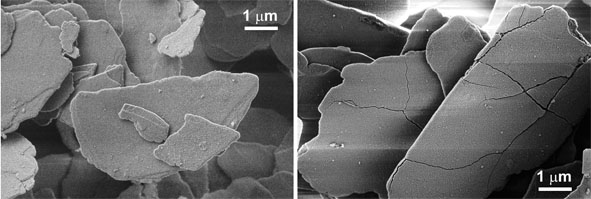186t How Can the Colloidal Dispersion Stability of Water-Based Automotive Paints Be Predicted?
Currently automotive companies use a closed loop pipeline flow to avoid sedimentation of such flakes. Nevertheless the quality control systems in the automotive industry are not able to predict the colloidal stability of the water-based paints. The total stress from the collisions and flow in the closed loop pipelines results in the agglomeration of the electrostatic stabilized flakes and even in their destruction (Figure 1, right). Latter has a tremendous effect on the resulting optical properties, resulting in inhomogeneous colorations on the surface of the cars. Here we present the development of a more advanced quality control system, which experimentally simulates the total stress that is being applied on the flakes during several weeks. In addition with particle size distribution measurements the colloidal stability of the water-based paints can be predicted in just one week, reflecting process estimations of ten to fourteen weeks.
Fig. 1: Scanning electron microscopy images of mica flakes (left). Upon the application of a critical stress the water-based paints become unstable resulting in the destruction of the flakes (right) and the corresponding inhomogeneity of the coloration
